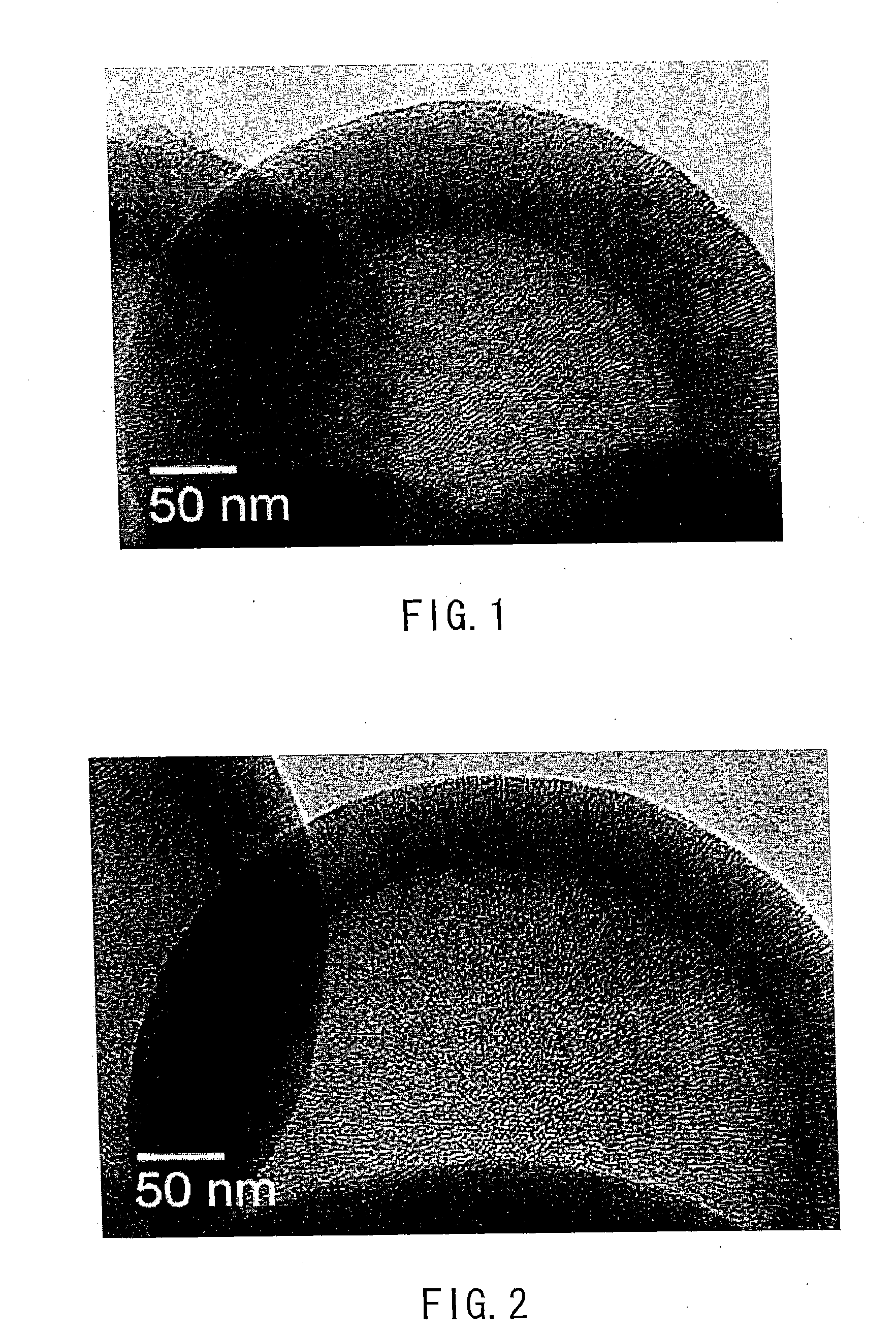Method for producing composite silica particles
a technology of composite silica and silica, which is applied in the direction of physical/chemical process catalysts, metal/metal-oxide/metal-hydroxide catalysts, other chemical processes, etc., to achieve the effect of utilizing the efficiency of hydrophobic organic substances
- Summary
- Abstract
- Description
- Claims
- Application Information
AI Technical Summary
Benefits of technology
Problems solved by technology
Method used
Image
Examples
embodiment 1
[0061]One embodiment of the method for producing composite silica particles of the present invention will be described below. The method for producing composite silica particles of this embodiment involves the following steps (I) to (III).
Step (I); a step of preparing a hydrophobic organic substance (solution A), a solution (solution B) containing water (aqueous solvent), and a silica source (solution C) for generating a silanol compound by hydrolysis; where at least either the solution A or solution B contains at least one kind of surfactant selected from the group of quaternary ammonium salts expressed by general formulae (1) and (2):
[R1(CH3)3N]+X− (1)
[R1R2(CH3)2N]+X− (2)
(in the general formulae, R1 and R2 each denotes independently a linear or branched alkyl group having 4 to 22 carbon atoms, and X− denotes a univalent anion);
Step (II): a step of mixing the solution A prepared in the step (I) with the solution B and emulsifying (forming an 0 / W type emulsion);
Step (III): a step ...
embodiment 2
[0066]The description below refers to another embodiment of the method for producing composite silica particles of the present invention. The method for producing composite silica particles in this embodiment involves the following steps (I′) and (II').
Step (I′): a step of preparing a hydrophobic organic substance (solution A′) containing a silica source for generating a silanol compound by hydrolysis, and a solution (solution B) including water (aqueous solution), where at least either the solution A or the solution B contains at least one kind of surfactant selected from quaternary ammonium salts expressed by general formulae (1) and (2):
[R1(CH3)3N]+X− (1)
[R1R2(CH3)2N]+X− (2)
(in the general formulae, R1 and R2 each denotes independently a linear or branched alkyl group having 4 to 22 carbon atoms, and X− denotes a univalent anion).
Step (II′): a step of mixing a solution B with the solution A prepared in the step (I′), emulsifying and forming outer shell parts.
[0067]The respectiv...
example 1
[0090]Into a 500 mL flask, 100 g of methanol (special grade; manufactured by Waco Pure Chemical Industries Ltd.), 1.7 g of dodecyl trimethyl ammonium chloride (manufactured by Tokyo Chemical Industry Co., Ltd.) and 1.5 g of rapeseed oil (manufactured by Sigma-Aldrich Japan) were introduced and stirred so as to prepare a solution A. Into a 500 mL flask, 300 g of water, 0.825 g of an aqueous solution of 25% tetramethyl ammonium hydroxide (manufactured by Waco Pure Chemical Industries Ltd.) were introduced and stirred so as to prepare a solution B. The solution B was added to the solution A while stirring the solution A at 25° C., then 1.7 g of tetramethoxysilane (solution C) (manufactured by Tokyo Chemical Industry Co., Ltd.) was added, which was stirred at 25° C. for 5 hours. The obtained whitish aqueous solution was filtered with a paper filter of Grade No. 5C, washed with water, and dried at 100° C. by using a dryer (DRM420DA manufactured by Advantech Co., Ltd.), thereby a white po...
PUM
| Property | Measurement | Unit |
|---|---|---|
| temperature | aaaaa | aaaaa |
| temperature | aaaaa | aaaaa |
| pore diameter | aaaaa | aaaaa |
Abstract
Description
Claims
Application Information
 Login to View More
Login to View More - R&D
- Intellectual Property
- Life Sciences
- Materials
- Tech Scout
- Unparalleled Data Quality
- Higher Quality Content
- 60% Fewer Hallucinations
Browse by: Latest US Patents, China's latest patents, Technical Efficacy Thesaurus, Application Domain, Technology Topic, Popular Technical Reports.
© 2025 PatSnap. All rights reserved.Legal|Privacy policy|Modern Slavery Act Transparency Statement|Sitemap|About US| Contact US: help@patsnap.com


